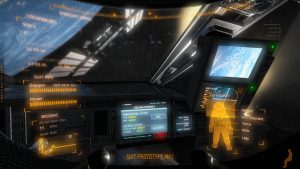Mental Rotation and Spatial Navigation Training
During my ongoing literature review I often discover interesting facts about things I’ve never thought about. Sometimes I can connect these facts with my own observations: The result is mostly a completely new idea why things are as they are. Maybe these ideas are new to you, too. Therefore I’ll share my new science based knowledge with you!
This week: This time, I take a look at Take On Mars and analyze the game’s spatial navigation and mental rotation ability training effects.

Take On Mars – Docking with the ISS
It was already shown that 3D computer games can train mental rotation [1] and spatial navigation [2] abilities. During the gameplay of those games, players can explore the virtual worlds and hence practice to orientate themselves in 3D spaces. Also, computer games often involve the rotation of objects in order to solve puzzles or to construct new things in the game world. For instance, the construction of a new spacecraft in Kerbal Space Program allows for the rotation of individual parts in order to give the new vessel a unique shape. In the end, players subconsciously train those abilities as they constantly repeat certain actions demanding them thus training them due to repetition.
Another great example for an effective mental rotation and spatial navigation training using computer games are the Take On Mars scenarios that involve the docking of a spacecraft to another spacecraft or to the Internation Space Station. The player’s goal is to successfully dock a spacecraft that is performing station keeping next to the other spacecraft by changing the spacecraft’s position and alignment. As those scenarios take place in a simulated space environment, the player is able to rotate the spacecraft around all the three axes and to freely translate it to a desired position. In the end, the player has to align the own spacecraft’s docking port with the target spacecraft’s docking port. For this purpose, the player controls the spacecraft from a cockpit view that provides the player with an additional docking screen indicating the current spacecraft’s alignment relative to the target docking port.
In order to successfully complete the scenarios, the player has to translate the spacecraft towards the target docking port, subequently change the spacecraft’s alignment so that the docking ports are facing towards each other and finally close the gap between them in order to successfully dock both spacecraft. During this procedure, the game exhausts the player’s spatial navigation and mental rotation skills as the spacecraft can be rotated and translated in any direction. Hence, the player is challenged to analyze and visualize the current spacecraft’s status and to decide which operation might help in order to complete the task. Subequently, when the player executes a maneuver, the game immediately provides the player with feedback about the maneuver’s effect, thus helping the player to train their spatial abilities.
In conclusion, Take On Mars creates an effective training environment for spatial abilities as the game’s goals and game mechanics demand a player’s mental rotation and spatial navigation, thus training those skills due to repetition.
[1]Cherney, I. D. (2008). Mom, let me play more computer games: They improve my mental rotation skills. Sex Roles, 59(11-12):776–786.
[2]Joorabchi, M. E. and El-Nasr, M. S. (2011). Measuring the impact of knowledge gained from playing fps and rpg games on gameplay performance. Entertainment Computing – ICEC 2011, pages 300–306.